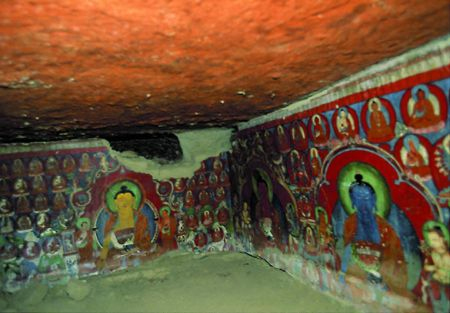Guge, A Lost Kingdom In Tibet
Updated: 2007-08-02 08:40
Buddhist structures and murals


Guge was a Bhuddist state and this is reflected in its architecture and art. Stupas were built to show respect to the Buddhas and some caves at the base of the hill were reserved for meditation retreat. However, the best-preserved Buddhist structures are named after either the outward color of structures such as the White Palace or the Red Palace, or names of Buddhas such as the Yamantaka Chapel or the Tara Chapel, or Buddhist practices such as the Mandala Chapel.
Within these surviving structures, murals have been well preserved and still exude a luster through ages of dust. Most of the murals are religious paintings, either portraits of various Buddhas, works depicting scenes believed to have happened in their lives, or pictures reflecting the religious life of the Guge people. Attention was paid to the details when these murals were painted, such as eyes, brows, gestures, and even clothes of a Buddha.
Apart from murals, there are many metallic sculptures of
Buddha in the Guge ruins. Guge Silver Eyes is one of the finest bronze
sculptures of a Buddha ever unearthed. This Buddha has four arms and three eyes.
Each arm holds a musical instrument used in a Buddhist mass. The three eyes are
silver-gilt, hence its name.
 | 1 | 2 | 3 | 4 | 5 |  |

